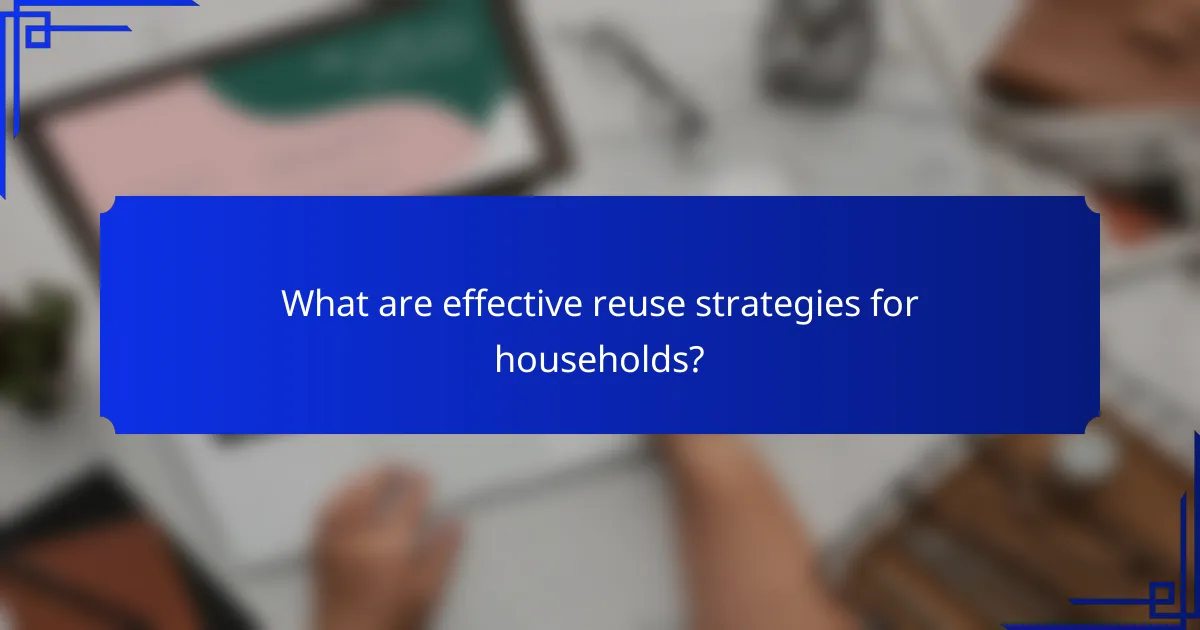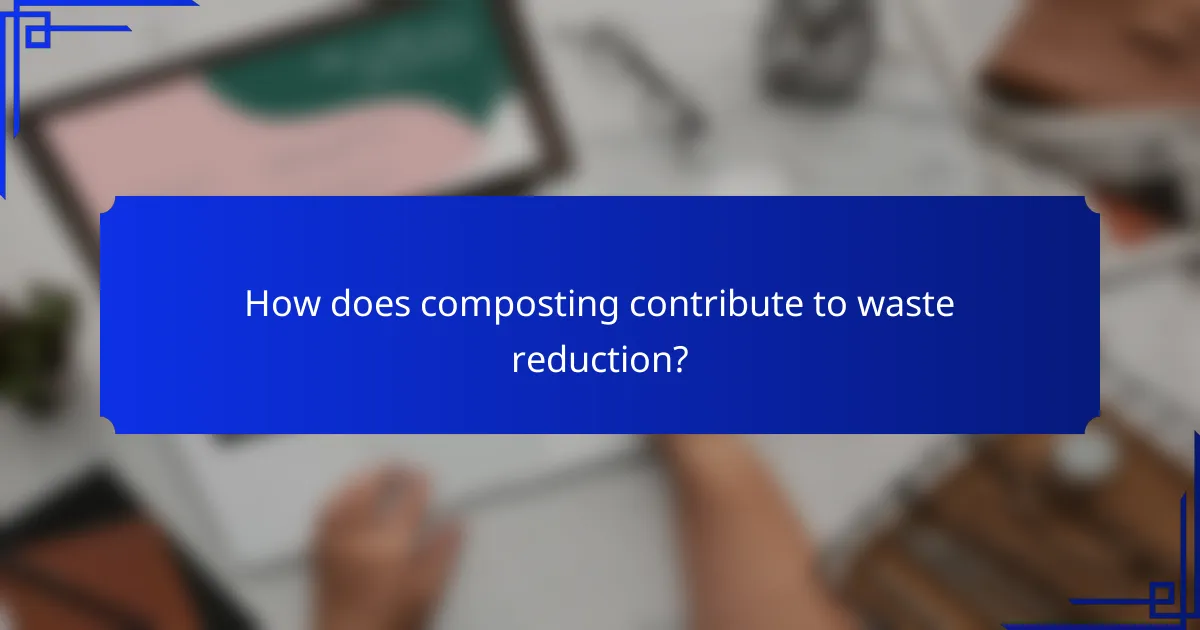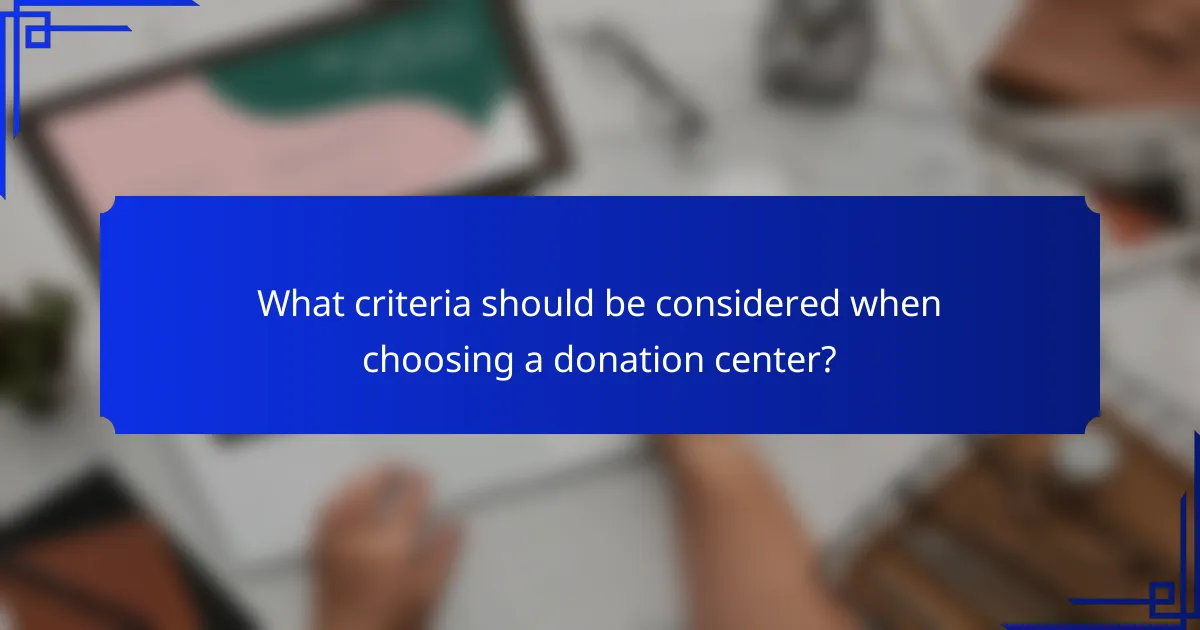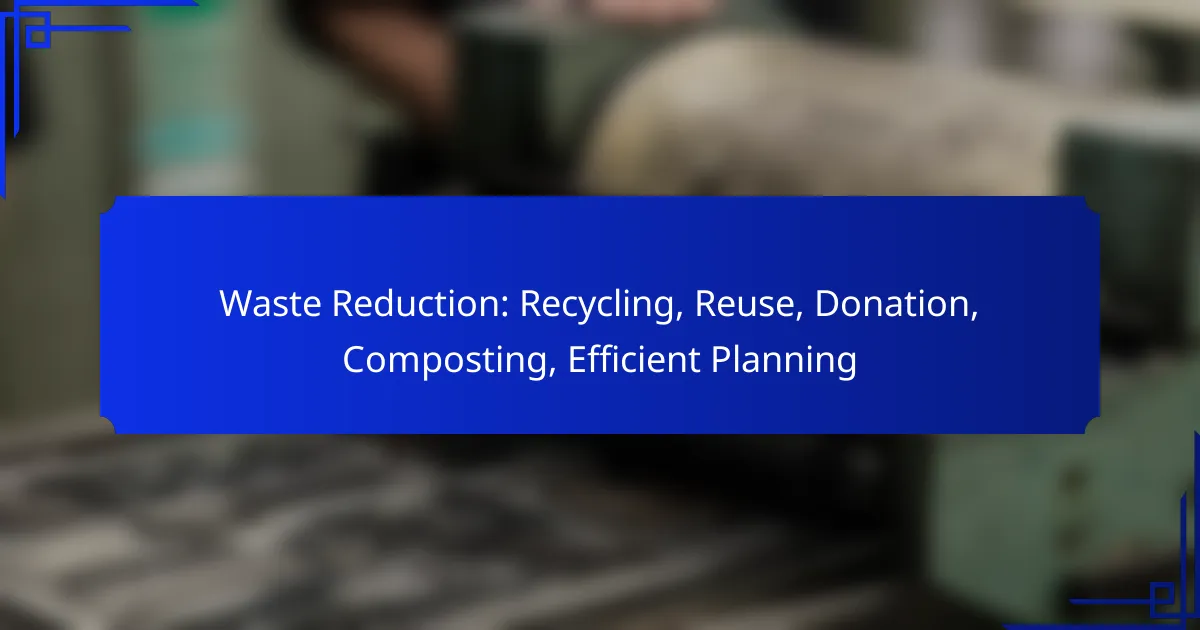Waste reduction is a crucial aspect of environmental sustainability, encompassing practices such as recycling, reuse, donation, and composting. By implementing these strategies, individuals and communities can significantly decrease the amount of waste sent to landfills, conserve natural resources, and reduce pollution. Efficient planning further enhances these efforts, ensuring that waste management practices are both effective and sustainable.

How can recycling reduce waste in urban areas?
Recycling significantly reduces waste in urban areas by diverting materials from landfills and promoting the reuse of resources. This process not only conserves natural resources but also minimizes pollution and greenhouse gas emissions associated with waste disposal.
Benefits of recycling programs
Recycling programs offer numerous benefits, including reduced landfill use, conservation of energy, and the creation of jobs in the recycling and manufacturing sectors. By recycling materials like paper, plastics, and metals, cities can lower their waste management costs and improve environmental quality.
Moreover, recycling helps to foster a culture of sustainability within communities, encouraging residents to adopt eco-friendly practices. Educational initiatives can further enhance participation rates, leading to more effective waste management overall.
Successful recycling initiatives in New York City
New York City has implemented several successful recycling initiatives, such as the curbside recycling program that collects paper, cardboard, metal, and plastic. This program has increased recycling rates significantly since its inception, demonstrating the effectiveness of accessible recycling options.
Additionally, NYC’s “Zero Waste” goal aims to divert 90% of waste from landfills by 2030, promoting composting and expanded recycling efforts. Community engagement and outreach play a crucial role in these initiatives, helping to educate residents on proper recycling practices.
Recycling rates in Los Angeles
Los Angeles has made strides in improving its recycling rates, with the city aiming for a 90% diversion rate by 2035. As of recent reports, the recycling rate hovers around 30-40%, indicating room for growth and improvement.
The city has introduced various programs, including a comprehensive curbside recycling service and educational campaigns to inform residents about recycling guidelines. By focusing on outreach and accessibility, Los Angeles seeks to enhance participation and ultimately reduce waste in urban environments.

What are effective reuse strategies for households?
Effective reuse strategies for households include upcycling, participating in community swap events, and donating items to local centers. These approaches not only help reduce waste but also promote sustainability and community engagement.
Upcycling furniture
Upcycling furniture involves creatively repurposing old or unused items into something functional or aesthetically pleasing. For example, an old dresser can be transformed into a stylish TV stand or a set of wooden pallets can be turned into a garden bench.
When upcycling, consider the materials and tools you have on hand. Simple projects often require minimal investment and can significantly extend the life of furniture while adding a personal touch to your home.
Community swap events
Community swap events allow individuals to exchange items they no longer need for those they find useful. These events can include clothing swaps, book exchanges, or general household goods, fostering a sense of community while promoting reuse.
To participate, check local community boards or social media groups for upcoming events. Bring items in good condition and be open to discovering new treasures while decluttering your home.
Donation centers in Chicago
In Chicago, several donation centers accept a variety of items, including clothing, furniture, and household goods. Notable organizations include Goodwill, Salvation Army, and Habitat for Humanity ReStores, which often provide free pickup services for larger items.
Before donating, ensure that items are clean and in usable condition. Each center may have specific guidelines on what they accept, so it’s wise to check their websites or call ahead to confirm. Donating not only helps those in need but also contributes to a more sustainable community.

How does composting contribute to waste reduction?
Composting significantly reduces waste by transforming organic materials into nutrient-rich soil. This process diverts food scraps and yard waste from landfills, decreasing methane emissions and promoting healthier ecosystems.
Benefits of composting organic waste
Composting organic waste offers numerous benefits, including improved soil health and reduced need for chemical fertilizers. It enriches the soil with essential nutrients, enhances moisture retention, and fosters beneficial microorganisms.
Additionally, composting minimizes landfill waste, which helps lower disposal costs and reduces greenhouse gas emissions. By recycling organic materials, communities can promote sustainability and environmental stewardship.
Composting methods for urban dwellers
Urban dwellers can adopt various composting methods, such as vermicomposting, which uses worms to break down organic matter, or bokashi composting, which ferments waste using specific microbes. Both methods are space-efficient and suitable for small apartments.
Another option is using a compost bin or tumbler, which can be placed in a backyard or balcony. These systems accelerate decomposition and can handle a range of organic materials, making them practical for city living.
Local composting programs in Seattle
Seattle has implemented several local composting programs to encourage residents to participate in waste reduction. The city offers curbside compost collection, allowing households to dispose of food scraps and yard waste easily.
Additionally, Seattle provides resources and workshops on composting techniques, including community composting sites where residents can learn and share composting practices. These initiatives aim to increase composting participation and promote a sustainable urban environment.

What are the best practices for efficient waste planning?
Efficient waste planning involves implementing strategies that minimize waste generation and maximize resource recovery. Key practices include adopting recycling programs, encouraging reuse, and integrating composting into waste management systems.
Waste management frameworks
Waste management frameworks provide structured approaches to handling waste effectively. They typically encompass regulations, policies, and best practices that guide municipalities and organizations in reducing waste and promoting sustainability.
Common elements of these frameworks include source reduction, recycling, composting, and waste-to-energy initiatives. Stakeholders should consider local regulations and community needs when developing or adopting a framework.
Case studies of effective waste reduction in San Francisco
San Francisco is renowned for its ambitious waste reduction goals, aiming for zero waste by 2030. The city has implemented a comprehensive recycling and composting program that has significantly increased diversion rates, with over half of its waste being composted or recycled.
Key strategies include mandatory composting for residents and businesses, extensive public education campaigns, and partnerships with local organizations to enhance participation. These efforts have positioned San Francisco as a leader in urban waste management and sustainability practices.

What criteria should be considered when choosing a donation center?
When selecting a donation center, consider the types of items accepted, potential tax deduction benefits, and the reputation of local charities. These factors ensure that your contributions are both useful and appreciated, maximizing the impact of your generosity.
Types of items accepted
Different donation centers have varying policies on the types of items they accept. Commonly accepted items include clothing, household goods, furniture, and electronics. Before donating, check the center’s guidelines to ensure your items meet their criteria.
Some centers may also have restrictions on items due to safety or hygiene concerns, such as used mattresses or certain types of appliances. It’s best to contact the center directly or visit their website for a comprehensive list of acceptable donations.
Tax deduction benefits
Donating to a registered nonprofit organization can provide tax deduction benefits, which can help reduce your taxable income. To qualify, ensure the charity is recognized by the IRS as a 501(c)(3) organization. Keep a detailed record of your donations, including receipts and itemized lists.
The value of your donations can be deducted on your tax return, but it’s important to follow IRS guidelines on valuation. Generally, items should be valued at fair market value, which is what a buyer would pay for them in their current condition.
Local charities in Boston
In Boston, several reputable charities accept donations. Organizations like Goodwill, The Salvation Army, and Boston Rescue Mission are well-known for their community support and outreach programs. Each of these charities has specific needs and guidelines for donations.
Before donating, consider visiting their websites or calling them to learn about their current needs and any upcoming events. This ensures your contributions are timely and beneficial to the community.
